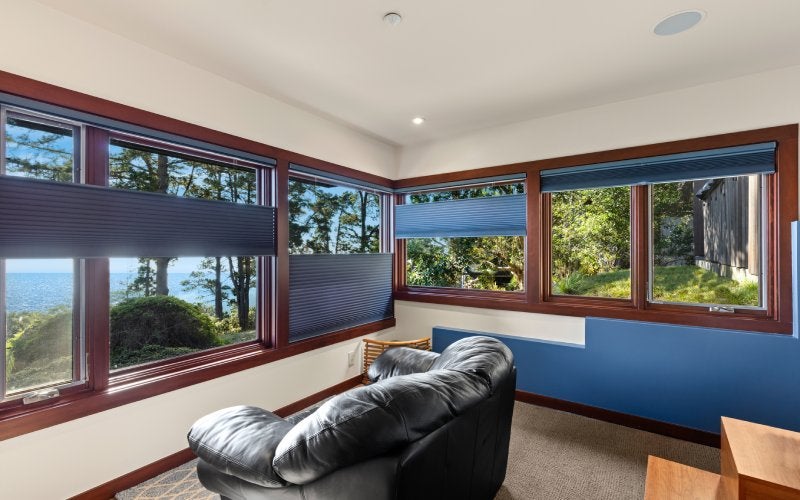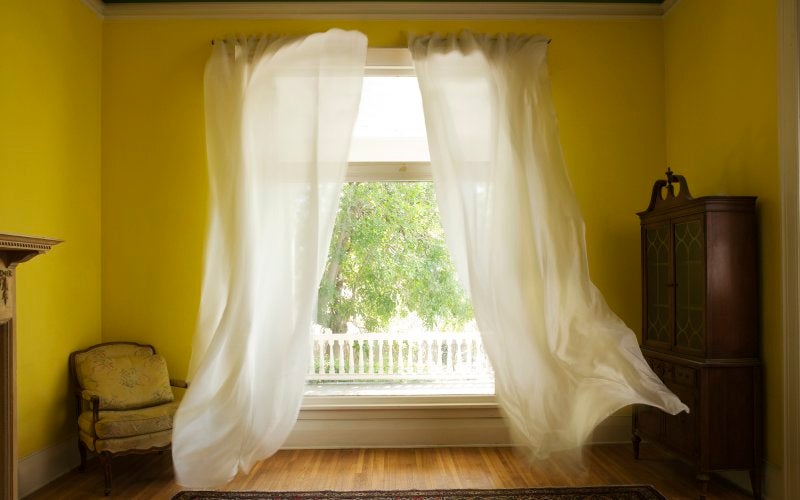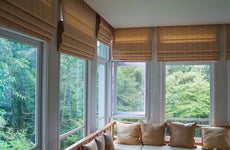What are the different types of window treatments? A beginner’s guide

The Bankrate promise
At Bankrate we strive to help you make smarter financial decisions. While we adhere to strict , this post may contain references to products from our partners. Here's an explanation for .
Imagine a window that’s just a pane of glass. Pretty bare-looking, right? But humans have an innate need to adorn things. And so they invented window treatments.
What exactly is a window treatment? Admittedly, it’s a bit of decorator-speak that isn’t used much outside of interior design circles. But even if you don’t know the term, you probably know examples — shades, blinds, curtains or shutters.
That’s a varied list, and there are infinite variations within each category, too. Often, the options can seem overwhelming. So here’s a beginners’ guide: a look at the different types of window treatments, what they do, and what to consider when deciding what’ll work in your home.
Types of window treatments
Technically, a window treatment is any decorative or functional item you hang, attach, or place on or around your window. Decorating and design pros divide window treatments generally into two types: hard and soft, based on the material they’re made of.
Hard window treatments

The two basic styles of hard window treatments are:
- Blinds, a series of hard slats or louvers (usually horizontal, but sometimes vertical) connected by cords or cloth “tape,” which allow them to tilt — that is, open or close — to varying degrees. In addition, the blinds themselves can be raised or lowered.
- Shutters, basically a pair of slatted doors that are fitted within the window frame with hinges that allow them to swing open and closed; in some elaborate cases, they come in several sections, which fold back and stack flush with the wall, accordion-style.
Soft window treatments

Soft window treatments are made of fabric; so if hard treatments are furniture for the window, they could be considered clothing for the window. They, too, fall into two major styles:
- Curtains or drapes are panels of fabric, suspended from a rod, that run the length of the window — or, in the case of café curtains — the top or bottom half of it. People often use the terms interchangeably, but technically drapes are heavier and thicker than curtains, and are lined. Both, though, usually come in pairs and sweep horizontally across the window.
- Shades are made from one long piece of material and either wrap around rollers or fold up accordion-style. They operate similarly to blinds, raising or lowering to expose the window.
You sometimes see shades classified as hard window treatments, due to the substance they’re made of. For example, cellular shades are composed of three-dimensional, geometric cellular air pockets made from insulated synthetics. Then there are shades made of woven woods like bamboo or grasses. The technological advances have blurred the boundaries between hard and soft.
Decorative window treatments
The major types of window treatments are intended to cover or expose the glass. But there are some styles that remain in place on top of the window and are purely decorative (though often they serve to hide the hardware).
- Valances are swags of fabric suspended around the top and upper sides of a window frame.
- Cornices are hollow box-shaped structures that are fitted over the top of the window frame.
Again, because of the materials they’re made of, valances are classified as “soft” treatments and cornices as “hard,” though both can work with blinds, shades, drapes and curtains.
What’s new in window treatments?
Here are some recent innovations in window treatments.
| Treatment | Features |
|---|---|
| Honeycomb / Cellular shades | made from multiple layers of insulated material, with an open air pocket between them; from the side, they look like a row of hexagonal cells, or a honeycomb. Highly energy-efficient, they block light, heat and UV rays. |
| Solar shades | made of a coated material that blocks out light. They also reduce glare, protect against harmful UV rays and prevent fading from the sun. |
| Cordless shades and blinds | ditch the ropes; instead they’re raised and lowered from the top or bottom by touch. |
| Smart shades and blinds | motorized and can be controlled remotely, via an app or home Wi-Fi. Their sensors allow them to operate on a schedule or in response to changes in weather, temperature or movements. |
Which window treatments cost the most?
The cost of window treatments varies widely depending on the style, technology, material and whether they’re standard or customized. Here’s a breakdown of the average costs of the basic types of window treatments. (All prices courtesy of HomeAdvisor).
Blinds
Blinds are generally the most affordable. The average cost to buy and install blinds runs between $210 and $1,250 per set.
Shades
Shades are a bit more expensive than blinds, but they’re still a good option for those on a budget. The average cost of shades is $200 to $4,800 per window.
Shutters
Shutters have a wide range: as little as $100 or as much as $8,600 per window. Installation takes longer, so labor costs are higher.
Curtains/Drapes
Curtains are the most expensive type of window treatment, since they so often have to be custom-measured and fit. The average cost of curtains runs $250 to $1,500 per panel, plus up to $350 per rod.
How to choose the right window treatment
Obviously, the options are endless. Here are some of the most popular considerations for window treatments.
Budget
Different treatments come with different price points (see above). In general, customized or made-to-measure treatments will cost much more than standard or ready-made ones.
More specifically, you’ll want to consider any additional materials or hardware that may be required for the treatment. For example, if you need to build a track for your curtains, there will be a cost associated with that.
Also, if you want automated or smart windows, you’ll pay a premium — as much as double or triple the cost of the conventional, manual variety.
Functionality
Window treatments serve three main purposes: to provide privacy, to keep out the light and to add warmth by preventing heat from escaping your home. Blinds and shutters provide the most options in light control, since their louvers can be adjusted (as opposed to curtains and shades, which only open or close). If energy efficiency is important, consider paying more upfront for cellular or solar treatments.
Style
Since each type of window treatment has infinite varieties, generalizations are tricky. Overall, though, shades and blinds tend to have a sleeker, cleaner look — more fitting, some feel, with open layouts and minimalist modern decor. In contrast, curtains and drapes have a softening effect; when drawn, they tend to make a room seem smaller, more cozy — and somewhat fussy and old-fashioned to some eyes. That said, there are sheer and gauzy drapes that look quite contemporary, and patterned, poofy shades that look quite traditional.
As for shutters, they tend to give off a rustic or historic-home vibe. But different woods and finishes can make a big difference, and overall, they offer a unique, customized look.
You don’t have to choose between hard and soft treatments, either. It’s not unheard of for a window to boast both blinds and curtains, for example.
Related Articles



